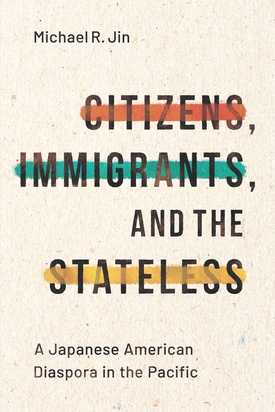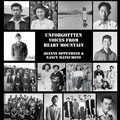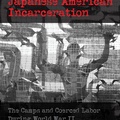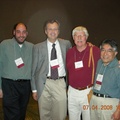I feel a close kinship with this remarkable book by Michael R. Jin. In 2013, I was privileged to read his pioneering UC Santa Cruz dissertation, which he completed under the able mentorship of Alice Yang and that became the basis for the 2022 Stanford University Press book here under review. It is included within the press’s Asian American series edited by Gordon Chang, the same series in which Yang (then Yang Murray) contributed her stunning 2008 work, Historical Memories of the Japanese American Internment and the Struggle for Redress, and I, in 2018, had published my edited volume, Nisei Naysayer: The Memoir of Militant Japanese American Journalist Jimmie Omura.
Citizens, Immigrants, and the Stateless is a groundbreaking transnational historical inquiry into the diasporic experiences (many quite challenging and even dangerous) of some 50,000 Nisei (second-generation Americans of Japanese ancestry, representing about one-fourth of that cohort group’s total population in the U.S.) who, within the first half of the 20th century, left their native country to settle in either Japan or the territories of the Japanese Empire.
Designated as Kibei-Nisei (or just simply Kibei), their life course, too often suppressed in the standard literature, was not only at variance with that of those Nisei who remained in the U.S. (and whose trajectory have been highlighted in both academic and popular accounts), but arguably, according to Jin, less the generational exception than the norm.
Based upon his extensive research into archival and published sources in both the English and Japanese languages, Jin’s study consists of six chapters: two of them devoted to Kibei-Nisei in pre-World War II Japan, two treating their incarceration in U.S. concentration camps, and two on those who were trapped in wartime Japan. All of these chapters are propelled by case studies that, taken together, illuminate the diversity of Kibei-Nisei encounters and personalities embedded in a Japanese American identity.
The first two chapters explore the variegated reasons responsible for Nisei migrating to Japan (e.g., family, education, employment, and career development), but do so in terms that are perhaps a mite too generic rather than compellingly personal.
The middle two chapters, while depicting in broad terms how Kibei-Nisei were demonized by the U.S. government, camp authorities, and even certain sectors within the Nikkei inmate populace, misfires somewhat on the fortuitous opportunity afforded to provide an in-depth depiction of the Kibei-Nisei camp narrative (a topic that badly needs to be seriously addressed and redressed in the future by scholars of the Japanese American World War II incarceration).
The final two chapters focus on the following two subjects, both of which are richly documented: (1) the 20,000 Kibei-Nisei stranded during the Pacific War in the Japanese Empire, particularly those who either served in the Japanese military or performed non-combatant intelligence gathering; and (2) the Kibei-Nisei victims of the atomic bomb (hibakusha)—most especially, those 3,000 living in the city of Hiroshima—who went unacknowledged by the U.S. government and were deemed ineligible for medical care because their war story challenged the prevailing American narrative relative to the nuclear bombing.
My above reservations about Jin’s masterpiece are assuredly debatable and decidedly minor in nature. Overall, he has produced a book that is dramatically innovative in terms of its topic and one that is exceedingly well-written, astutely documented, and deserving of reaching a wide audience of engaged readers.
CITIZENS, IMMIGRANTS, AND THE STATELESS: A Japanese American Diaspora in the Pacific
By Michael R. Jin
(Stanford, Calif.: Stanford University Press, 2022, 223 pp., $30, paperback)
*This article was originally published in the Nichi Bei News on July 20, 2023.
© 2023 Arthur A. Hansen / Nichi Bei News








